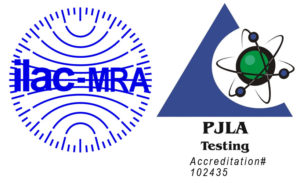Cyclic Versus Single-Pull Peel Testing: Influence on the First Yield Point …
Food Analysis
by | Adhesion Society 1997| Publications, Food Analysis
Cyclic Versus Single-Pull Peel Testing: Influence on the First Yield Point of a Pressure-Sensitive Adhesive
20th Annual Meeting of the Adhesion Society, Proceedings, pp. 425-427, (1997)
J. C. Conti,2 Ph.D., and E. R. Strope,2 Ph.D., E. Jones,1
1 Southwest Missouri State University, Springfield, Missouri
2 Dynatek Dalta Scientific Instruments, Galena, Missouri
Presented by: Eran Jones
Adhesion Society 1997
Introduction
Many properly designed adhesive joints fail via a peel mechanism. It is important to understand the influence of loading versus time on the peel process. Peel adhesion of tapes with elastomeric adhesives is strongly dependent on viscoelastic properties of the adhesive [1-3]. Mode of peeling failure is also a function of the viscoelastic properties of the adhesive [4-5].
The peel adhesion of viscoelastic rubber adhesives show four different pulling rate dependent modes of peeling, including 1) peeling with viscous adhesive response, 2) peeling with rubbery response, 3) oscillatory, or slipstick peeling, and 4) peeling with glass adhesive response [6]. There is a relationship between peel force and peel velocity as well as loss modulus and frequency in a dynamic mechanical experiment [7-8]. This paper investigates the influence of frequency of subthreshold cyclic loading on peel failure.
Single Pull Test
Experimental and Results
Forty-eight samples of a commercially available peelable pressure sensitive adhesive on paper (Post-it Notes) were subjected to a 90° pull angle peel test. Testing was carried out under stroke control on a micromechanical tester. Displacements rates varied from 0.1 to 0.5mm per second, while total displacement varied from 1 to 5mm. Analysis of the first yield point indicated a mean of 11.6 ± 3.9g. Table 1 is a sample of these results.
Table 1
|
Sample
|
Ist Yield
(grams)
|
2nd Yield
(grams)
|
3rd Yield
(grams) |
|
40
|
9
|
13
|
39
|
|
41
|
9
|
14
|
40
|
|
42
|
14
|
20
|
60
|
|
43
|
10
|
13
|
—
|
|
44
|
10
|
13
|
40
|
|
45
|
11
|
15
|
45
|
|
46
|
19
|
22
|
43
|
|
47
|
13
|
16
|
40
|
|
48
|
12
|
18
|
39
|
Cyclic Test
Experimental and Results
Thirty samples were prepared identically as described under the single pull test. These were subjected to cyclic evaluation. In each case the testing was carried out under load control by imposing a 0 to 6 gram sinusoidal load on the sample at different testing frequencies. This load range was chosen to ensure testing below the first yield point as determined in the single pull section of this discussion. Table 2 is a sample of the results found at 2, 4, and 8Hz.
In each case surface separation began within 3,000 cycles. There was a general trend toward lower adhesive modulus versus number of cycles and greater creep at higher frequencies.
In this experiment peel failure in general and load at first yield in particular are influenced by cyclically loading the joint. It is important when designing and evaluating an adhesive joint that the properties be determined at low load utilizing cyclic testing. In this way a greater understanding of the long-term durability and peel properties of the bond can assist in the optimization of the resulting adhesive joint.
Table 2
6g Load Control Cyclic Peel Data
|
Sample
|
Cycles
|
Δy (mm)
|
creep(mm) (1)
|
E (2)
|
Hz
|
|
E
|
1
|
0.065
|
0
|
93.89
|
2
|
|
E
|
10,000
|
0.067
|
0.025
|
88.72
|
2
|
|
E
|
15,000
|
0.072
|
0.055
|
83.33
|
2
|
|
E
|
20,000
|
0.075
|
0.06
|
79.72
|
2
|
|
E
|
25,000
|
0.075
|
0.07
|
77.76
|
2
|
|
K
|
1
|
0.04
|
0
|
129.1
|
2
|
|
K
|
3,000
|
0.055
|
0.015
|
101.71
|
2
|
|
K
|
6,000
|
0.065
|
0.017
|
95.27
|
2
|
|
K
|
10,000
|
0.065
|
0.02
|
87.14
|
2
|
|
K
|
15,000
|
0.065
|
0.022
|
82.10
|
2
|
|
N
|
1
|
0.085
|
0
|
62.16
|
4
|
|
N
|
3,000
|
0.085
|
0.05
|
57.41
|
4
|
|
N
|
5,000
|
0.085
|
0.085
|
61.05
|
4
|
|
N
|
10,000
|
0.10
|
0.085
|
56.18
|
4
|
|
N
|
21,000
|
0.12
|
0.085
|
58.28
|
4
|
|
O
|
1
|
0.10
|
0
|
73.29
|
4
|
|
O
|
500
|
0.075
|
0.075
|
73.29
|
4
|
|
O
|
2,500
|
0.085
|
0.09
|
71.94
|
4
|
|
O
|
5,000
|
0.075
|
0.225
|
70.54
|
4
|
|
O
|
10,000
|
0.075
|
0.23
|
63.77
|
4
|
|
O
|
15,000
|
0.075
|
0.23
|
70.39
|
4
|
|
AB
|
1,000
|
0.080
|
0
|
77.19
|
8
|
|
AB
|
5,000
|
0.102
|
0.11
|
62.66
|
8
|
|
AB
|
10,000
|
0.154
|
0.15
|
37.24
|
8
|
|
AB
|
26,000
|
0.161
|
0.14
|
35.87
|
8
|
1 Change in effective gauge length since beginning of experiment
2 Simple modulus, stress/strain (g/mm)
References
[1] D.H. Kaelbe, J. Adhesion 1, 102 (1969).
[2] A.N. Gent and R.P. Petrich, Proc. R. Soc. London Ser. A 310, 433 (1969).
[3] E.H. Andrews and A.J. Kinloch, Proc. R. Soc. London Ser.A 332, 385 (1973).
[4] D.H. Kaelbe, J. Colloid Sci. 19, 413 (1964).
[5] D.W. Aubrey, Ned Rubberind 36 (2), 1 (1975).
[6] D.W. Aubrey and M. Sheriff, J. Polmer Sci., Polymer Ed. 18, 2597 (1980).
[7] A. Mayer, T. Pith, G. Hu and M. Lambla, J. Polymer Sci. Part B: Polymer Physics, 33, 178, (1975).
[8] Ibid, 33, 1793 (1995).



